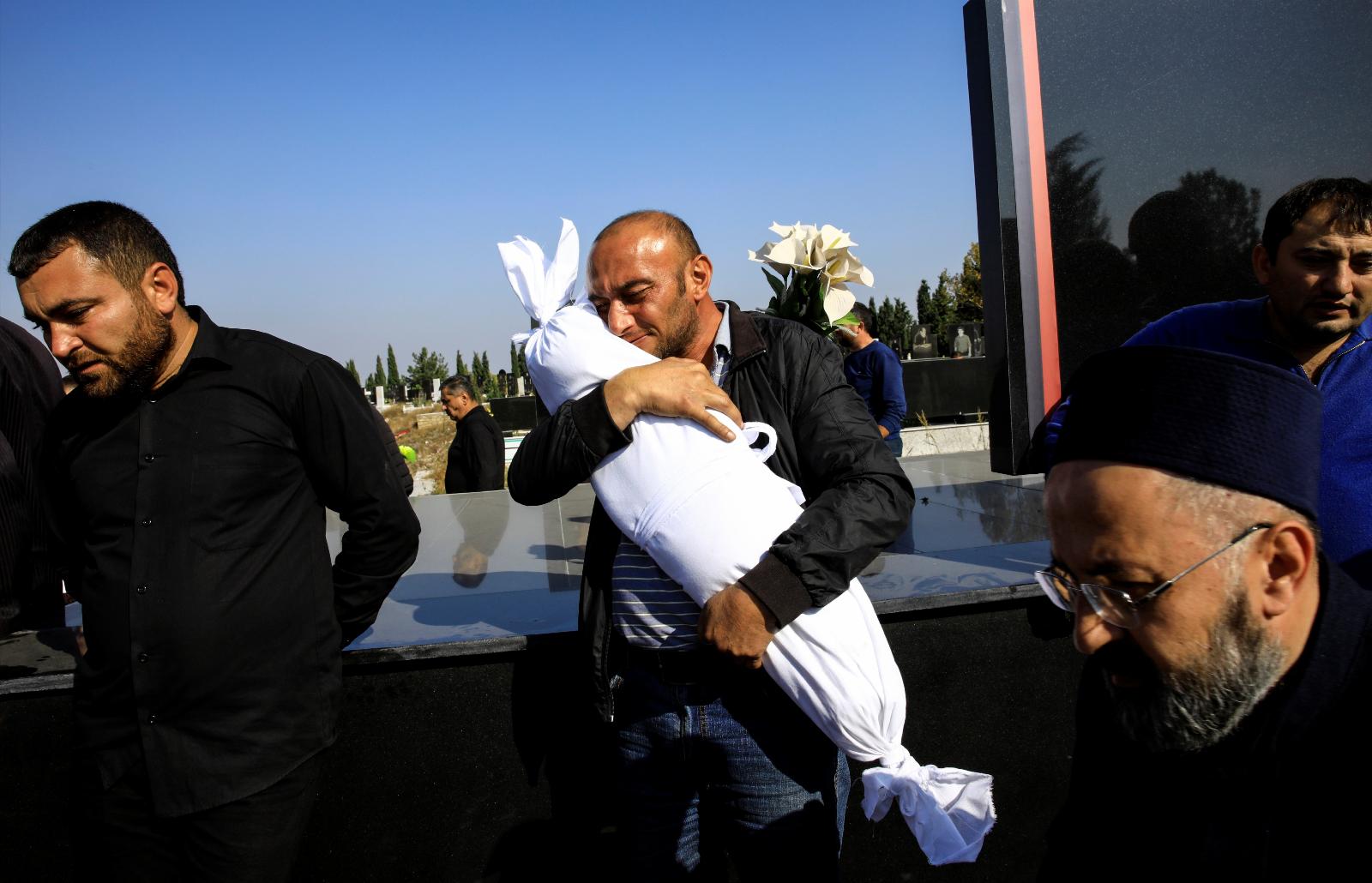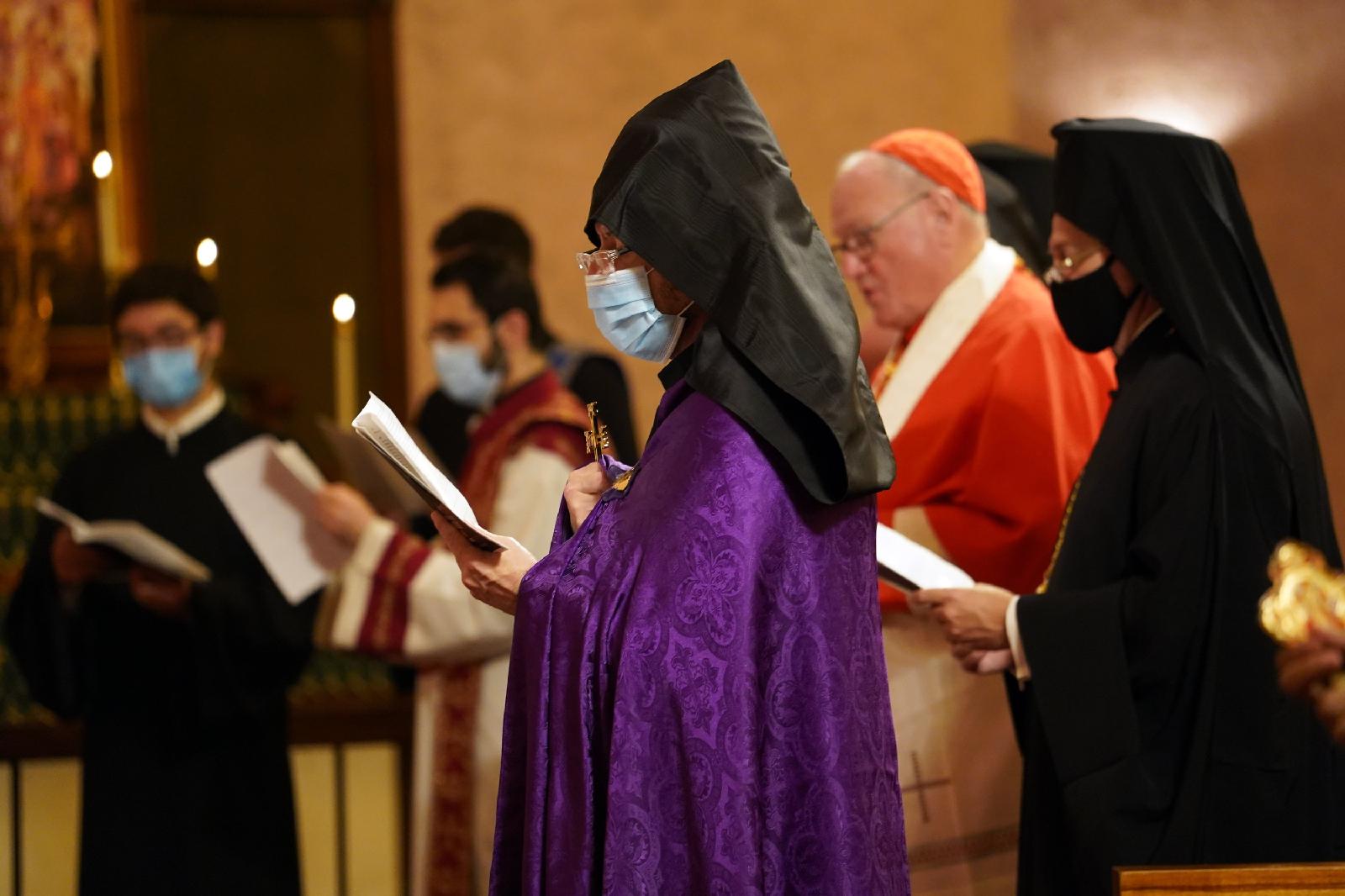
WINDSOR TERRACE — For Khoren Onanyan of Brooklyn, the news is grim from his native Armenia.
On Wednesday, Nov. 18, Onanyan said his nephew was about to have surgery to remove metal fragments from his stomach. It was one of eight combat wounds suffered during renewed violence between Armenia and neighboring Azerbaijan.
The two nations had resumed fighting in late September in a decades-old dispute over the mountainous region called Nagorno-Karabakh.
Onanyan said Armenia had been negotiating in good faith for 30 years to make mutually acceptable buffer zones and boundaries since the end of the First Nagorno-Karabakh War in 1994. But, he claimed, Azerbaijan grew impatient and forced the second major clash between the two nations.
He pointed to reports from multiple international news organizations suggesting Azeris accepted help from Turkey, which financed the deployment of Syrian mercenaries to the conflict.
The nephew, a 27-year-old government employee, is a former soldier who was recalled to service when Azerbaijani forces launched an offensive to retake the area, Onanyan said.
“I spoke with him yesterday, and they already removed most of the bullets,” said Onanyan about his sister’s son. “Thank God he is alive.”
But whatever relief Onanyan felt about his nephew’s condition was dashed by news last weekend of a Russian-brokered ceasefire. The deal allowed Azerbaijan to retain control over the land it seized during the six weeks of fighting, an insult to Armenians, Onanyan said.
The latest ceasefire is intended to help the talks resume, but Onanyan had no optimism.
“We all are depressed, I can assure you,” Onanyan told The Tablet. “I will be bold and say there is not any Armenian anywhere in the world who is not in depression over this.”
A Surviving Culture
An estimated 10,000-20,000 people belong to the Armenian community throughout the five boroughs of New York City, said Onanyan. Most, he added, are members of the Armenian Apostolic Church, also called the Armenian Church.
Onanyan explained that Brooklyn no longer has an Armenian parish. So church members from Brooklyn worship with congregations in Queens or Manhattan.
Headquarters for the Armenian Church’s Eastern Diocese of America is at the St. Vartan Cathedral, at Second Avenue and 34th Street in Midtown Manhattan.
Onanyan said parishes of the church are also “community centers” where members of the community bring their U.S.-born children to learn Armenia’s language, traditions, and culture.
And while Brooklyn has no parish, the church does conduct the Brooklyn Armenian School on 19th Street in Sheepshead Bay in space rented from St. Mark Catholic Academy.
Onanyan, an accountant, came to the U.S. 19 years ago from Yerevan, the capital of Armenia.
He formerly served as a volunteer principal for the Brooklyn Armenian School, which also teaches religion and history. Therefore, children learn about the genocide that killed an estimated 600,000 to 1 million Armenians living in Turkey during World War I.
Onanyan said Armenians never forget this dark chapter in their history, which inspires them to preserve their culture.
“I understand how history works,” he said, “and many cultures and countries disappear.
And in our 4000-to-5000-year existence, we had a lot of terrible years, but also surviving years. The thing that is left for us is our culture — our surviving culture.”
Working Toward Communion With the Catholic Church
The Armenian Church has traditions similar to the Roman Catholic Church, but it is not in communion with the Catholic Church.
Still, leaders of both churches have long sought communion with each other, and Pope Francis has worked to keep that tradition. On Nov. 1, he reiterated his disapproval of the recent violence and urged Catholics to pray for peace.
Cardinal Timothy Dolan, Archdiocese of New York, did likewise in late October when he participated in an ecumenical prayer for peace at St. Vartan Cathedral.
Bishop Daniel Findikyan of the Eastern Diocese of America hosted the event. Local leaders of the Orthodox, Oriental Orthodox, and protestant denominations also attended.
Cardinal Dolan urged Armenians to have hope in faith during the crisis.
“Sometimes we believers are dismissed as naive and idealistic and unrealistic dreamers,” the cardinal said. “Nonsense. Those who count on the military are the Pollyannas because these things never work. The shield of faith. The artillery of the spirit. That’s our strategy.”
“Jesus whispers to us this evening, ‘Take courage. I conquered the world.’”
‘I built this house from scratch’
Azerbaijan attacked on Sept. 27 when negotiations stalled over who may occupy the disputed region, ethnic Armenians or Azeris. The issue has festered since the breakup of the former Soviet Union in the early 1990s gave independence to both Armenia and Azerbaijan.
Members of the Armenian community took to Manhattan streets the evening of Oct. 10 to protest the renewed fighting over the Nagorno-Karabakh. A caravan of cars with people honking horns and waving Armenian flags blocked traffic briefly on the Brooklyn Bridge.
But fighting continued. Death toll estimates for both sides range from 1,000 to 5,000, and as many as 100 civilians died. Both sides claim the other fired artillery at civilian areas. Armenians, however, said their enemies specifically targeted churches where displaced people had taken shelter.
As Russian troops rolled into Nagorno-Karabakh to enforce the ceasefire, ethnic Albanians fled with whatever they could carry, including personal belongings, doors, windows, and even plumbing fixtures.
Many set fires to the homes where they lived since the early 1990s when Armenians took control of the area during the First Nagorno-Karabakh War.
“I built this house from scratch,” a man in Dadivank told the BBC News, as flames spewed from his home’s windows. “I can’t leave it for anyone.”
“If my children can’t use this house,” the man said in the video posted on Twitter, “then no one can.”
‘I think this war might continue’
Dadivank is the site of an ancient monastery of the Armenian Church. According to tradition, Apostles Bartholomew and Thaddeus founded this church in the 1st century.
Armenians have said the monastery’s existence is proof that they have a cultural connection to the region. However, the United Nations recognizes Azerbaijan as the owner, even though it is administered by ethnic Armenians.
Onanyan said he worries that if the ceasefire doesn’t hold, a larger war might erupt and involve Russia, Turkey, and possibly Iran.
Armenia’s military is dwarfed by Azerbaijan’s forces, which draw from a larger population and revenues from its lucrative oilfields. A disruption of that market could mean an even broader, global conflict, Onanyan said.
He is also worried about a religious war considering Azerbaijan is predominately Muslim, while most Armenians are Christian.
The Turkish government, also Islamic, has denied its role in the conflict, but Onanyan said he believes news reports that suggest otherwise.
He expressed hope that the international community’s help in the future would be more effective than in the past six weeks.
“They did criticize the aggression,” Onanyan said, “but nothing was really done. There were no sanctions.”
“My hope is that the West will try a little harder to make sure this doesn’t happen in the future,” Onanyan said. “But I’m afraid this time.
“I think this war might continue.”
Rev. Father Mesrob Lakissian, pastor of St. Illuminator’s Cathedral in Manhattan, led his parish’s leaders in a letter of encouragement for their parishioners. The letter urged them not to forget that they’ve been tested throughout history.
He wrote, “When the bell tolled loudest, bearing a cross in one hand and a sword in the other, we answered the call of history, honored the blood of our ancestors, and won a just future for the generations to come. We are doing so again. We are Armenians. And we will not fail.”

